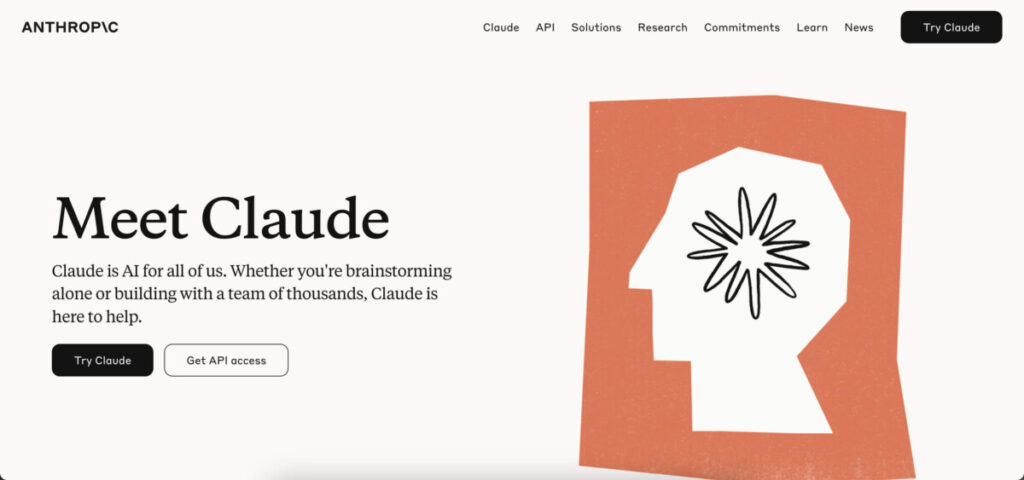In recent years, large language models (LLMs) have gained popularity for their ability to assist in various fields, including mathematics. But finding an LLM that excels specifically in math can be challenging.
With the right LLM, though, math enthusiasts, students, and professionals can solve complex problems, understand new concepts, and even receive tutoring assistance. But what makes an LLM good for math? And which models are the top contenders?
This guide will explore the best LLMs for math, covering everything from problem-solving accuracy to user-friendly interfaces and real-life applications.
What is an LLM, and Why Use One for Math?
Large language models, or LLMs, are AI systems trained on extensive datasets to understand and generate human-like text. For mathematics, an effective LLM can interpret complex problems, offer step-by-step solutions, and even suggest alternative approaches.
How Does an LLM Work for Math?
- Data Processing: LLMs analyze vast datasets, including mathematical text, research papers, and problem-solving guides.
- Pattern Recognition: These models detect and apply patterns, making sense of mathematical rules and concepts.
- Solution Generation: An effective LLM for math not only understands numbers but explains its reasoning. This makes learning easier and more interactive.
With these capabilities, LLMs bring real value, especially to students or professionals needing guidance or problem-solving assistance.
Top Features to Look for in an LLM for Math
- Accuracy: The ability to solve complex math problems with minimal errors.
- Comprehensiveness: Understanding advanced topics like calculus, algebra, and probability.
- Ease of Use: A user-friendly interface with interactive features.
- Consistency: Reliable performance across a range of problems and disciplines.
- Real-World Application: Useful in fields like engineering, data science, and finance
Top 10 LLM for Math
| LLM | Best For | Strengths | Limitations |
|---|---|---|---|
| GPT-4o (OpenAI) | Versatility, Complex Problem-Solving | High accuracy, detailed explanations | Subscription costs, occasional errors |
| Claude 3.7 (Anthropic) | Safe, Logical Reasoning | Reliable, user-friendly explanations | Limited access, sometimes oversimplifies |
| Google Gemini (Math Mode) | Conversational Learning | Easy explanations, accessible for free | Limited for advanced math, internet needed |
| LLaMA 3.1 405B (Meta) | Advanced Research | High computational power, deep reasoning | Restricted access, complex setup |
| Mistral 7B | Cost-Efficient Solutions | Resource-friendly, good for basic math | Limited complexity for advanced tasks |
| PaLM 2 (Google) | Enhanced Reasoning, Research | Advanced reasoning, Google integration | Restricted access, high resource needs |
| Falcon 180B | Open-Source Flexibility | Customizable, strong logic | Requires setup knowledge, resource-intensive |
| Grok (xAI) | Innovative Math Solutions | Focus on problem-solving, user-friendly | Newer model, limited access |
| ChatGPT-4 Turbo | Affordable, Fast Responses | Faster processing, more accessible | Slightly reduced complexity |
| NeoX 20B (EleutherAI) | Open-Source Research | Balanced performance, community-driven | Technical setup required, resource needs |
1. GPT-4 (OpenAI)

Overview
When looking for the best LLM for math, GPT-4 by OpenAI consistently ranks at the top. This versatile model excels at handling complex math problems, from basic arithmetic to advanced calculus. OpenAI’s focus on language and mathematical reasoning makes GPT-4 a leading choice in the top LLM for math category.
Strengths
- Exceptional Math Accuracy: Recognized as one of the top LLMs for math, GPT-4 handles diverse math topics and provides thorough explanations.
- Step-by-Step Problem Solving: Known for its ability to break down solutions, GPT-4 makes math accessible and educational for learners.
- Versatile Use Cases: Useful across educational and professional settings, this LLM for math is ideal for students, educators, and math professionals alike.
Limitations
- High Subscription Costs: Advanced access to GPT-4 can be expensive, which might limit its accessibility.
- Occasional Misinterpretations: Although it’s one of the top LLMs for math, GPT-4 may still make mistakes on highly complex or ambiguous math problems.
Best For
Users seeking a versatile, reliable LLM for math solutions, suitable for diverse applications and high accuracy in mathematical reasoning.
2. Claude 3.7 (Anthropic)

Overview
Claude 3.5 by Anthropic is a leading LLM for math and reasoning tasks, designed for safe and accurate problem-solving. It’s among the top LLMs for math due to its ability to handle complex, multi-step calculations while prioritizing logical accuracy and transparency.
Strengths
- Logical Precision: Claude excels in logical, multi-step reasoning, making it one of the best LLMs for math applications.
- Safety and Accuracy: Known for reliability, Claude’s focus on accurate, logical responses makes it a preferred choice for mathematical problem-solving.
- Human-Like Explanations: With clear and engaging explanations, Claude offers math solutions in a conversational, user-friendly way.
Limitations
- Access Limitations: Claude 3.5 isn’t as widely accessible as other top LLMs for math, as availability is somewhat restricted.
- Simplified Solutions at Times: While accurate, Claude may occasionally simplify solutions, which may require deeper exploration for advanced math users.
Best For
Math students, educators, and professionals who value safe, logical, and precise math solutions and seek one of the top LLMs for math reasoning.
3. Google’s Gemini (Advanced Math Mode)

Overview
In the top LLM for math category, Google’s Gemini stands out with its Advanced Math Mode. Gemini is particularly great for accessible, conversational math explanations, making it a user-friendly LLM for math with wide accessibility for students and casual users alike.
Strengths
- Easy-to-Understand Explanations: Gemini breaks down complex math concepts in simple language, which is ideal for learners at all levels.
- Google Integration: With access to Google’s vast data resources, Gemini can provide contextually relevant math answers. This enhances its usefulness as a top LLM for math tasks.
- High Accessibility: As a free and accessible LLM for math, Gemini is widely available, making it a top choice for casual math learners and students.
Limitations
- Limited for Advanced Calculations: While effective for general math queries, Bard may not handle advanced, research-level math problems as well as other LLMs for math.
- Internet Dependence: Bard’s functionality is highly dependent on internet access, which might be a limitation for some users.
Best For
Students and educators who need a user-friendly, accessible LLM for math that excels in explaining general math concepts clearly and efficiently.
4. LLaMA 3.1 405B (Meta)

Overview
For those looking for the best LLM for math in research and academic contexts, LLaMA 3.1 from Meta is a top contender. With 405 billion parameters, this LLM for math excels at handling high-level mathematical reasoning and problem-solving.
Strengths
- High Computational Power: With a massive parameter count, LLaMA 3.1 offers robust reasoning abilities for advanced math problems, making it a top LLM for math in research.
- Ideal for Complex Reasoning: Known for excelling in multi-step and abstract mathematical reasoning, LLaMA is designed to support researchers and data scientists.
- Academic Focus: As one of the top LLMs for math, LLaMA’s performance is great for those who need an advanced math assistant in research settings.
Limitations
- Limited Accessibility: LLaMA 3.1’s access is restricted, often limited to academic or research institutions.
- Complex Interface: Designed for experts, LLaMA may not be user-friendly for casual users needing simple math solutions.
Best For
Researchers and advanced users looking for the best LLM for math in academic, high-complexity problem-solving scenarios.
5. Mistral 8B with Math Optimization

Overview
Mistral 7B is a streamlined LLM for math tasks, optimized for mathematical reasoning within a smaller parameter framework. Its optimization for math-related problems makes it an efficient choice among the top LLMs for math on a budget.
Strengths
- Resource Efficiency: Mistral’s smaller size allows it to solve basic to intermediate math problems without extensive computational resources.
- Quick Problem-Solving: Ideal for simpler math queries, Mistral provides accurate solutions and is resource-efficient, making it a top LLM for math for lighter tasks.
- Good for Basic Math Applications: Mistral 7B works well for straightforward calculations, algebra, and basic statistics, appealing to students and learners.
Limitations
- Limited Complexity: While it’s one of the top LLMs for math at this scale, Mistral may struggle with highly complex problems due to its parameter size.
- Narrow Scope: Mistral is tailored for lighter tasks and may lack the depth required for advanced calculus or engineering-level math.
Best For
Budget-conscious users and students needing an efficient, reliable LLM for math capable of handling basic to intermediate problems without demanding large resources.
6. PaLM 2 (Google)
Overview
PaLM 2, Google’s advanced language model, has demonstrated significant potential in mathematical problem-solving. It’s known for its ability to tackle logical reasoning and complex calculations, making it a contender among the top LLMs for math.
PaLM 2’s capabilities span a wide range of mathematical topics, making it a versatile choice.
Strengths
- Enhanced Reasoning Skills: PaLM 2 excels at solving multi-step math problems, particularly in algebra and calculus.
- Integration with Google’s Ecosystem: This LLM for math benefits from Google’s extensive data resources, making it suitable for applications that require real-world data alongside computations.
- User-Friendly Interaction: PaLM 2’s interface is designed to be intuitive, offering detailed solutions in a conversational manner.
Limitations
- Access Restrictions: While powerful, access to PaLM 2 is often limited to research collaborations or Google’s internal tools.
- High Resource Requirements: Due to its size and complexity, PaLM 2 requires substantial computational power, which can be a barrier for some users.
Best For
Researchers and professionals who need a robust LLM for math with enhanced reasoning capabilities and access to a broad dataset.
7. Falcon 180B
Overview
Falcon 180B is an open-source LLM for math that offers impressive reasoning capabilities, particularly in technical and scientific contexts. Developed with a focus on transparency and accessibility, Falcon 180B is popular among researchers looking for an open-source alternative in the top LLM for math category.
Strengths
- Open Source: Unlike many proprietary models, Falcon 180B is open-source, providing flexibility for users who want to customize their own LLM for math applications.
- Strong Logical Reasoning: The model is designed for handling technical content, making it suitable for advanced math topics and scientific research.
- Community Support: As an open-source model, it benefits from a large community of developers who contribute to its improvement.
Limitations
- Complex Setup: Being open-source, Falcon 180B may require technical expertise to set up and fine-tune, which can be a barrier for non-technical users.
- Resource-Intensive: Running Falcon 180B requires significant computational resources, which can be costly for smaller organizations or individual users.
Best For
Advanced users, researchers, and developers seeking a customizable LLM for math with open-source flexibility.
8. Grok (xAI by Elon Musk)

Overview
Grok is a new player in the LLM for math space, developed by xAI under the leadership of Elon Musk. Grok is designed to perform well in reasoning tasks and mathematical problem-solving, making it an emerging option for users seeking a competitive edge in AI-assisted math.
Strengths
- Focus on Mathematical and Logical Problem-Solving: Grok’s development emphasizes strong reasoning abilities, making it suitable for complex math problems.
- Integration with Social Platforms: Developed alongside Musk’s vision for AI-integrated social platforms like X (formerly Twitter), Grok offers easy accessibility for casual and professional users.
- Emerging Features: As a newer model, Grok is expected to integrate innovative features that leverage real-time data and user interaction.
Limitations
- Limited Availability: Being a newer entry, Grok is currently in limited deployment, with access mostly through closed beta or specific platforms.
- Less Established: Unlike models like GPT-4 or Claude, Grok has not yet been tested as extensively, making its reliability uncertain in some areas.
Best For
Tech enthusiasts and early adopters looking for a LLM for math with a focus on innovation and emerging AI capabilities.
9. ChatGPT-4 Turbo (OpenAI)
Overview
ChatGPT-4 Turbo is a streamlined version of GPT-4, designed to offer faster response times with lower costs. It retains the mathematical prowess of GPT-4 while being more accessible for everyday use, making it a practical choice in the top LLM for math category.
Strengths
- Cost-Effective: ChatGPT-4 Turbo offers a more affordable option without sacrificing the core strengths of GPT-4, making it one of the best LLMs for math on a budget.
- Faster Response Times: Optimized for speed, this version is ideal for users who need quick answers to mathematical queries.
- Broad Accessibility: Available through platforms like ChatGPT Plus, it’s more accessible to casual users and students who need reliable math help.
Limitations
- Slightly Reduced Complexity: While still powerful, some of the deeper reasoning abilities of GPT-4 may be less pronounced in the Turbo version.
- Subscription Required: To access ChatGPT-4 Turbo, users typically need to subscribe to a paid plan.
Best For
Students, educators, and professionals seeking a LLM for math that balances affordability with advanced problem-solving capabilities.
10. NeoX 20B (EleutherAI)
Overview
NeoX 20B is an open-source LLM for math developed by EleutherAI. It’s part of the GPT-NeoX series and is designed to provide high performance in reasoning and problem-solving tasks, making it a valuable tool for those in need of an accessible yet powerful AI.
Strengths
- Open-Source Flexibility: Like Falcon, NeoX 20B offers the benefit of customization, allowing users to tailor the model for specific mathematical applications.
- Balanced Performance: With 20 billion parameters, NeoX 20B strikes a balance between computational power and resource efficiency.
- Community-Driven: Developed by the EleutherAI community, it’s continuously being improved with a focus on transparency and accessibility.
Limitations
- Technical Expertise Needed: Setting up and fine-tuning NeoX 20B can require significant technical knowledge, which might limit its use for general users.
- Resource Requirements: Running NeoX 20B efficiently can still require substantial hardware, making it more suitable for research labs or educational institutions.
Best For
Developers, researchers, and educators who are looking for an open-source LLM for math with solid reasoning capabilities and flexibility for customization.
How to Choose the Best LLM for Math
Selecting the best LLM for math involves considering your specific requirements, budget, and the complexity of the math problems you’re addressing.
Even though some have said AI isn’t good for math, each model has its own strengths, from handling basic algebraic equations to solving multi-step calculus problems and supporting in-depth research.
Factors to Consider When Choosing a Math-Focused LLM
1. Complexity of Math Problems: Different models are optimized for varying levels of complexity. Some, like GPT-4 and LLaMA 3.1, excel in advanced mathematics, while others, like ChatGPT-4 Turbo or Mistral 7B, are better suited for simpler, everyday math tasks.
2. Use Case (Learning, Research, Professional): Consider the primary setting in which you’ll use the LLM:
- For Learning: Look for models that provide clear, step-by-step explanations and can simplify complex concepts.
- For Research: Choose models that handle abstract reasoning and advanced problem-solving.
- For Professional Applications: Consider LLMs that can handle applied mathematics, statistics, or scientific calculations.
3. Budget and Accessibility: Models like Google’s Bard and ChatGPT-4 Turbo are more affordable and accessible, while others like GPT-4, Claude 3.5, or LLaMA may come with higher costs or access restrictions.
4. User-Friendliness: Some models require advanced technical knowledge to implement, such as LLaMA and Falcon, while others, like Math Mode-enabled Google Bard, are more straightforward and accessible for general users.
5. Customization Needs: If you’re a developer or researcher, open-source models like NeoX 20B and Falcon 180B offer customization options, allowing for specific adjustments in mathematical problem-solving.
| Use Case | Recommended LLM | Reason |
|---|---|---|
| High School or College-Level Learning | ChatGPT-4 Turbo, Google Bard (Math Mode) | Provides accessible explanations, step-by-step breakdowns |
| Advanced Mathematical Research | LLaMA 3.1 405B, GPT-4 | Handles complex problems with high computational power |
| Basic Calculations and Everyday Math | Mistral 7B, ChatGPT-4 Turbo | Cost-effective and fast for general math tasks |
| Professional & Applied Mathematics (e.g., Finance, Engineering) | Claude 3.5, PaLM 2 | Reliable in logical reasoning and applied math solutions |
| Open-Source Development or Customization | Falcon 180B, NeoX 20B | Open-source flexibility with community-driven improvements |
| Innovative Math Solutions on Social Platforms | Grok (xAI) | Emerging AI features designed for user interactivity |
The Bottom Line
Choosing the best LLM for math can enhance your learning experience, save time, and make complex topics more manageable.
Whether you’re a student, a professional, or someone interested in improving your math skills, there’s an LLM designed to fit your needs.
By understanding the unique strengths of each model, you can make an informed choice and leverage AI to make math not only accessible but enjoyable.
FAQs
1. Are LLMs good at math?
LLMs are improving at math, especially with problem-solving and basic calculations. However, they can still struggle with complex or highly specialized problems, so double-checking results is often recommended.
2. What is the best AI for math?
The best AI for math depends on your needs. GPT-o4 and Claude 3.7 are highly rated for general math tasks, while Wolfram Alpha excels at precise calculations and technical math problems.
3. What is the math benchmark for LLM?
A common math benchmark for LLMs is MATH (Mathematics Aptitude Test of AI), which tests models on high school and early college-level math problems to assess accuracy and reasoning ability.
4. What is the hardest math to master?
Advanced topics like abstract algebra, differential geometry, and complex analysis are considered some of the hardest areas of math to master, often requiring deep theoretical understanding and abstract reasoning.

